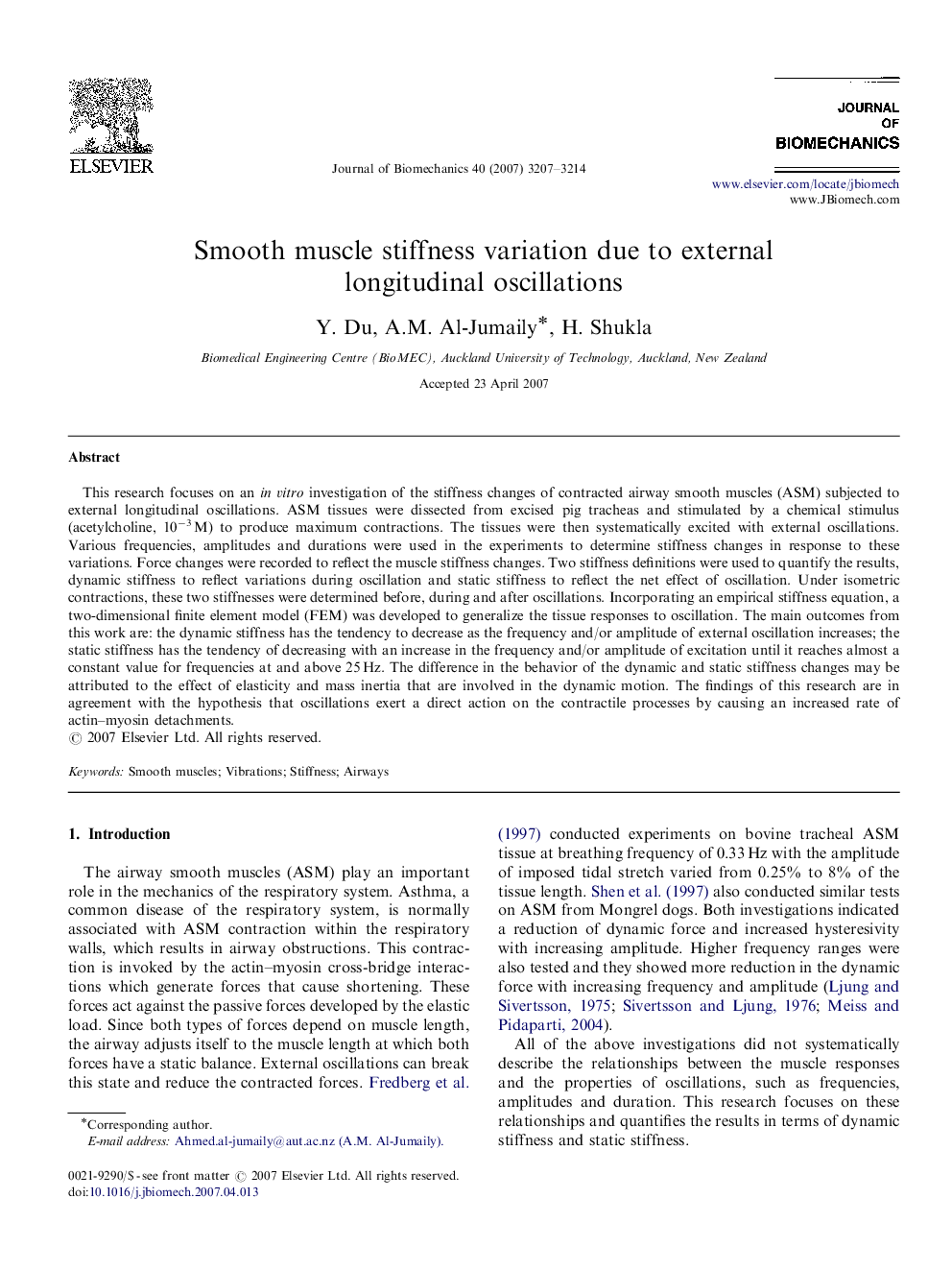| Article ID | Journal | Published Year | Pages | File Type |
|---|---|---|---|---|
| 875309 | Journal of Biomechanics | 2007 | 8 Pages |
This research focuses on an in vitro investigation of the stiffness changes of contracted airway smooth muscles (ASM) subjected to external longitudinal oscillations. ASM tissues were dissected from excised pig tracheas and stimulated by a chemical stimulus (acetylcholine, 10−3 M) to produce maximum contractions. The tissues were then systematically excited with external oscillations. Various frequencies, amplitudes and durations were used in the experiments to determine stiffness changes in response to these variations. Force changes were recorded to reflect the muscle stiffness changes. Two stiffness definitions were used to quantify the results, dynamic stiffness to reflect variations during oscillation and static stiffness to reflect the net effect of oscillation. Under isometric contractions, these two stiffnesses were determined before, during and after oscillations. Incorporating an empirical stiffness equation, a two-dimensional finite element model (FEM) was developed to generalize the tissue responses to oscillation. The main outcomes from this work are: the dynamic stiffness has the tendency to decrease as the frequency and/or amplitude of external oscillation increases; the static stiffness has the tendency of decreasing with an increase in the frequency and/or amplitude of excitation until it reaches almost a constant value for frequencies at and above 25 Hz. The difference in the behavior of the dynamic and static stiffness changes may be attributed to the effect of elasticity and mass inertia that are involved in the dynamic motion. The findings of this research are in agreement with the hypothesis that oscillations exert a direct action on the contractile processes by causing an increased rate of actin–myosin detachments.
